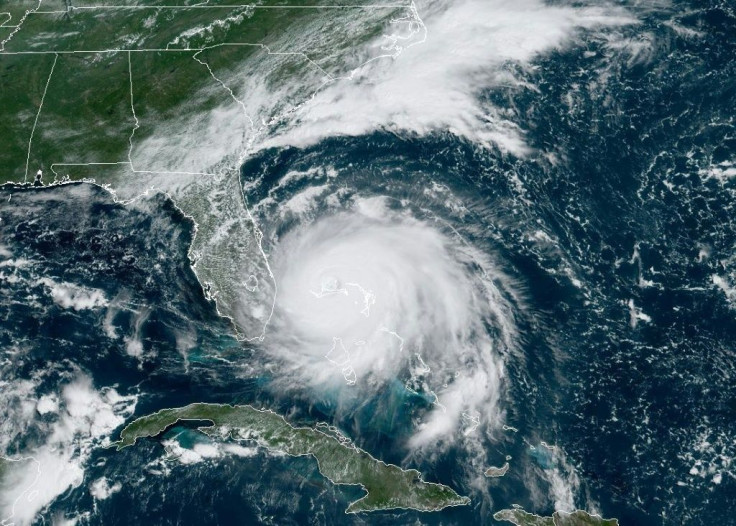Slow-crawling Dorian a new kind of threat

After devastating the Bahamas, Dorian is continuing its long crawl toward the southeast US with slightly weakened winds.
So what has made this relatively small hurricane so destructive?
Packing a punch
Hurricane Dorian stormed into the record books on Sunday when its maximum sustained winds of 185 miles (300 kilometers) per hour tied it in second place with 1998's Gilbert and 2005's Wilma as the most powerful Atlantic hurricane since 1950, according to Colorado State University's Tropical Meteorology Project.
First place is still held by 1980's Allen, which had maximum sustained winds of 190 mph.
Dorian is also the strongest hurricane on record to make landfall in the Bahamas by pressure.
From its peak as a Category 5 on the Saffir-Simpson wind scale, it has weakened to a Category 2 storm, but the US National Hurricane Center (NHC) has warned Americans to not take it lightly.
That's because wind speed is only one of a number of factors that make hurricanes destructive, including the storm surge and rainfall potential, as well as how long it stalls over one spot.
Dorian stalked the Bahamas for a highly unusual 18 hours, during which time it dumped in excess of 24 inches (60 cm) of rainfall, according to NASA data.
The archipelago's northernmost island also experienced storm surges estimated by the NHC at 10- to 15-foot (3m to 4.5m) above tide levels. At least five people have so far been reported killed, though the toll is expected to rise.
Hurricanes that stall
While over the Bahamas, Dorian's forward motion was at times just one mile per hour, heightening its destruction and making it harder for forecasters to predict its future path.
Kristy Dahl, a climate scientist with US advocacy group the Union of Concerned Scientists, told AFP hurricanes that stall for a long time are becoming more common, and recent studies show the phenomenon could be linked to man-made climate change.
The temperature contrast between the planet's higher and lower latitudes is the main driver of wind. Scientists suspect that because the Arctic regions are warming faster than those at the equator, global atmospheric circulation is also falling.
Before Dorian, Harvey loitered in Texas in 2017, while Florence stalled over North Carolina last September.
A study by NASA and NOAA scientists published in June found that between 1944 and 2017, the average forward speed of hurricanes decreased by 17 percent, from 11.5 mph, to 9.6 mph.
Climate change supercharging storms
While the science linking climate change and hurricane stalling is cutting-edge and still under discussion, there is a far more broad consensus on the other ways that global warming is supercharging storms.
The overall number of hurricanes is not increasing, but more are going on to become powerful Category 4 and 5 storms.
There are three main factors, according to Dahl. First, the excess heat from global warming has primarily been absorbed by the oceans, meaning that storms pass over warmer water carrying more potential energy that translates into rainfall and stronger winds.
"The warming has been even more pronounced in the Atlantic Ocean, which has warmed by about 0.5 degrees Fahrenheit (0.3 degrees Celsius) per decade since the 1970s," Dahl wrote in a blog post.
Secondly, rising sea levels make the storm surges higher and more extensive. And thirdly, warmer air holds more moisture -- an example of which was seen during Hurricane Harvey, which dumped 60 inches of rainfall.
A study by US federal researchers published in the influential journal Nature in February identified another trend: hurricanes are increasingly undergoing "rapid intensification" over a short period of time, with the scientists linking the phenomenon to man-made climate change.
Dorian also rapidly intensified not once but twice over this weekend.
"The percentage of Atlantic hurricanes that have experienced rapid intensification has tripled since the 1980s, it's not something that we can explain by natural climate variability," said Dahl.
© Copyright AFP 2024. All rights reserved.





















